Searching for a good laptop for astronomy, astronomers, astrophotography and astrophysics is as difficult as the subject itself. Just buying a standard notebook or an average productivity workhorse will not suffice your needs.
You will need to find the most suitable one from the great variety of laptops of Windows, Mac, or Chromebook, available in the market. The system should be able to run all those specific apps and software programs necessary for astrophysics such as the Starry Night Pro, Stellarium, and Maxim DL.
TOP PICKS:
In This Article
Minimum & Recommended System Requirements for Astronomy, Astronomers or Astrophotography
For basic astronomy and astrophotography tasks, astronomers need a laptop with some minimum system requirements like an AMD Ryzen 3-3200U processor, 8GB DDR4 SDRAM, 128GB M.2 SSD, AMD Radeon graphics, 14 inches screen with 1366 x 768 pixels resolution.
However, depending on the software and its type these specifications can vary. So it is good to have a powerful PC.
For more advanced astronomical tasks, try to find a laptop with the below-mentioned recommended system requirements.
These higher-end specifications will enable astrophotographers and astronomers to process and analyze large and more complex datasets smoothly, and run specialized software and simulations lag-freely.
Minimum System Requirements: AMD Ryzen 3-3200U | 8GB DDR4 SDRAM | 128GB M.2 SSD | AMD Radeon Graphics | 14 inches screen | 1366 x 768 pixels resolution.
Recommended System Requirements: 8th-generation Intel Core i7-8750H or better processor | 16GB DDR4 SDRAM or more | 1TB PCIe SSD and 512GB PCIe Nvme SSD or more storage | NVIDIA GeForce GTX 1060 with Max Q Design or better GPU | 15.6 inches screen or bigger screen | 2880 x 1800 pixels resolution or higher resolution.
The 5 Best Laptops for Astronomers, Astronomy or Astrophotography:
1. Dell 7855 G7 Gaming Laptop – Overall Best
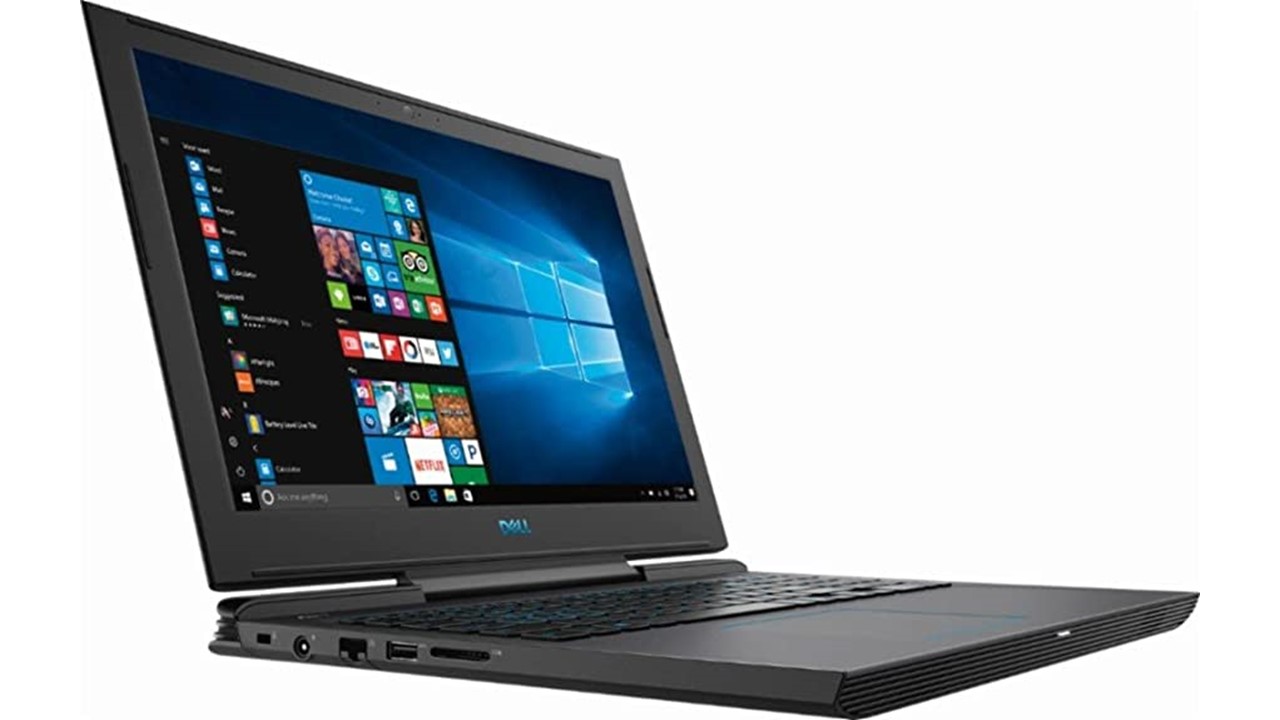
Bottom Line: For its balanced configurations, connectivity features, and smooth performance it is considered to be the overall best laptop for astronomers or others who are related to astronomy or astrophotography.
Key Features:
- Screen: 15.6 inches
- Storage: 512GB PCIe NVMe SSD
- RAM: 16GB DDR4 SDRAM
- Processor: 8th-generation Intel Core i7-8750H
- OS: Windows 10 home 64-bit
- GPU: NVIDIA GeForce GTX 1060 with max Q design
Pros
- USB Type C port with thunderbolt support
- Stereo speakers with maxx audio support
- 720p quality webcam support
Cons
- No backlit keyboard support
- Not a lightweight unit
- Short battery life.
The Dell 7855 G7 gaming laptop that comes with an 8th-generation Intel Core i7-8750H processor, 16GB DDR4 SDRAM, 512GB SSD, and NVIDIA GeForce GTX 1060 GPU is the best option for astronomers and astrophotography.
The high-end processor and ample RAM provide quick processing and data analysis capabilities, while the SSD enables the PC to smoothly process large data sets.
The powerful graphics card ensures smooth image processing and rendering for astrophotography.
Additionally, its 15.6 inches screen with 1920 x 1080 pixels resolution provides an immersive viewing experience, making it easy for astronomers to study images and identify celestial bodies.
2. Lenovo ThinkPad E580 – Runner Up
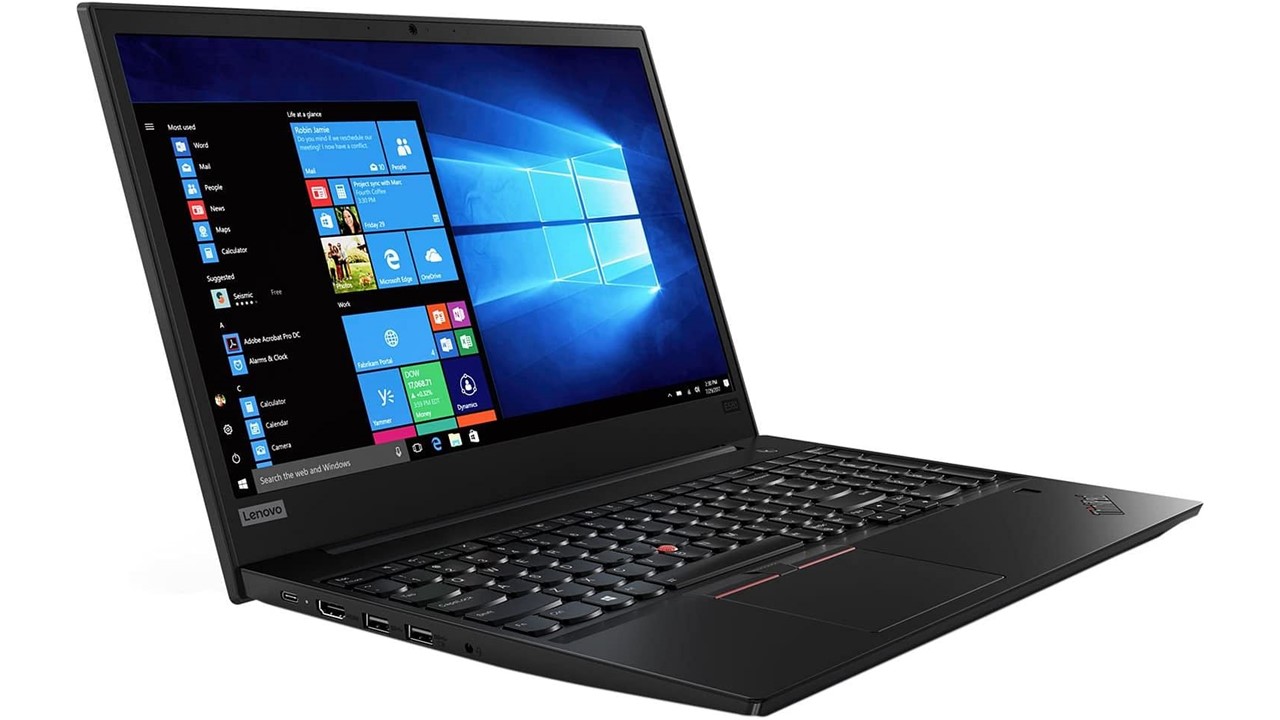
Bottom Line: In spite of having an Intel Core i7 processor of the 8th generation this laptop is considered as the runner up in this list because it comes with an integrated UHD graphics. However, it is strong and efficient enough to meet all the needs of astronomy, astronomers or astrophotography in the best way.
Key Features
- Screen: 15.6 inches
- Storage: 512 GB SATA SSD
- RAM: 16 GB DDR SDRAM
- Processor: 8th generation Intel Core i7 8550U
- OS: Windows 10 Professional
- GPU: Integrated Intel UHD Graphics 620
Pros
- The screen comes with a thin bezel and an anti-glare property.
- There is a fingerprint reader to ensure safety and faster access.
- The keyboard comes with a separate numeric keypad.
Cons
- There is no optical drive in the system.
- The trackpad is on the left and may cause inconvenience while typing.
- The battery life is average.
It is the specs and features that make this laptop feature in this list of laptops for astronomy, astronomers or astrophotography.
Lenovo ThinkPad E580 will support and fulfill all of your computational needs with the 8th generation Intel Core i7 processor consisting of four cores, 8 MB cache, and operational speed of 1.8 GHz at base clock and up to 4.0 GHz at boost clock.
The integrated Intel UHD graphics chip is good enough to deliver images at a fast rate and seamlessly with better color reproduction on the fairly large screen.
This screen comes with a thin bezel, full HD resolution, a matte finish, an IPS panel to offer wider viewing angle, and anti-glare property to ensure that the images do not cause any strain to the eyes.
The device offers multiple connectivity options in the form of both wireless and wired connectivity of 802.11ac Wi-Fi, Bluetooth 4.1, and 10/100/1000 Mbps Gigabit Ethernet LAN.
The ports and slots also add to the connectivity options. It includes one USB 2.0 Type A port, two USB 3.1 Gen 1 Type A ports, one USB 3.1 Gen 2 Type C port, one HDMI 1.4 port, and a 3.5 mm headphone/microphone combo jack.
The Windows 10 Professional operating system, the DDR SDRAM, the SATA SSD, the full-size keyboard, the 720p HD webcam, the integrated microphone and speaker enhances the performance and functionality of the system even more.
Add to that, the d-TPM 2.0 chip and the fingerprint reader ensures that your system and data both are well protected.
3. ASUS VivoBook Pro Laptop – Impressing Design and Cooling Efficient
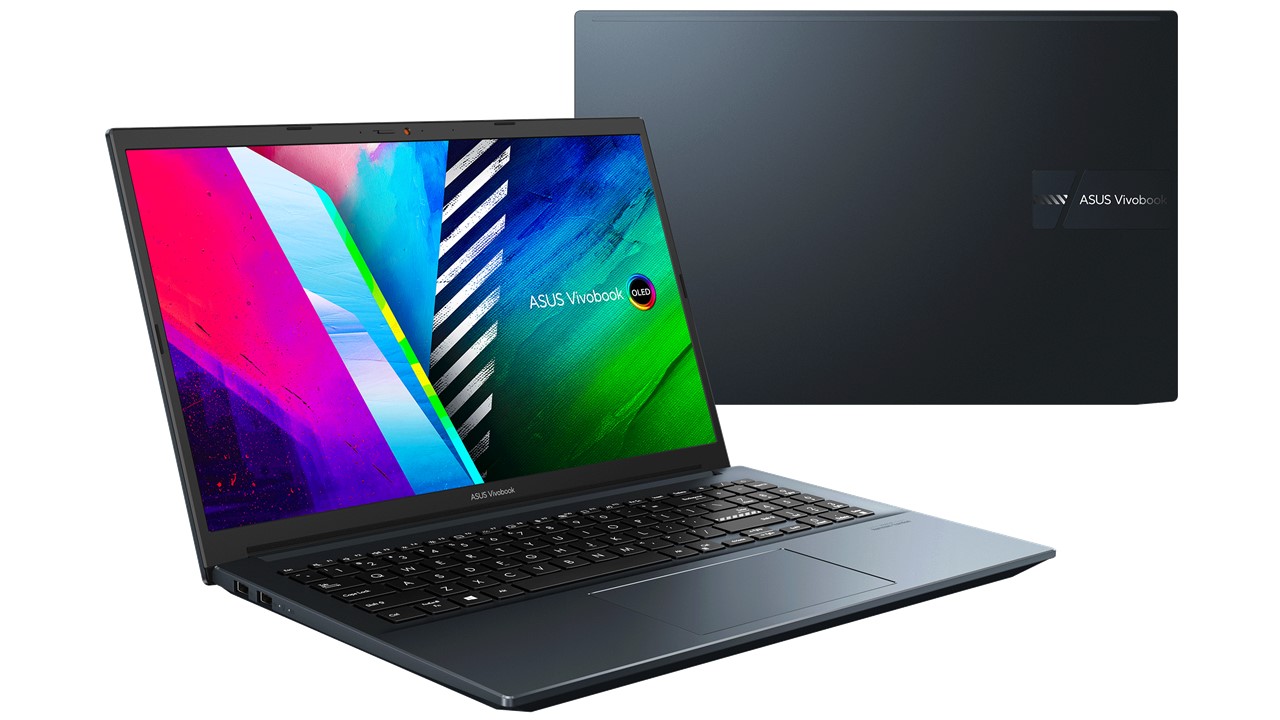
Bottom Line: This laptop is packed with a very good amount of specifications with an average price tag. Astronomers can expect smooth processing speed from the installed processor and it comes with an appealing design and some advanced cooling technology.
Key Features:
- Screen: 14 inches
- Storage: 1TB PCIe SSD
- RAM: 8GB DDR4 RAM
- Processor: 11th Generation Tiger Lake Intel Core i5-11300H
- OS: Windows 11
- GPU: Intel Iris Xe Graphics
Pros
- Dual fans with ice cool plus cooling technology
- A bright and vivid OLED display panel
- Backlit keyboard and updated Wi-Fi 6 support
Cons
- Battery life is not good enough
- Just an HD webcam support
- Don’t have a full-size keyboard
The ASUS Vivo Book Pro slim laptop is a good option for astronomers and astrophotographers with moderate computational needs.
It features an 11th-generation Intel Core i5-11300H processor, 8GB DDR4 RAM, 1TB SSD, and Intel Iris Xe graphics.
This combination of specifications offers good processing power for analyzing and processing astronomical data, while the GPU provides decent performance for astrophotography.
The laptop’s 14 inches OLED display with 2880 x 1800 resolutions offers clear and detailed viewing of astronomical images.
Additionally, the laptop’s lightweight and slim design makes it easy to carry around in the field.
The laptop also features Wi-Fi 6 and Bluetooth 5.0 for seamless connectivity.
4. MSI Modern 15 Laptop – Mid-Range Pricing
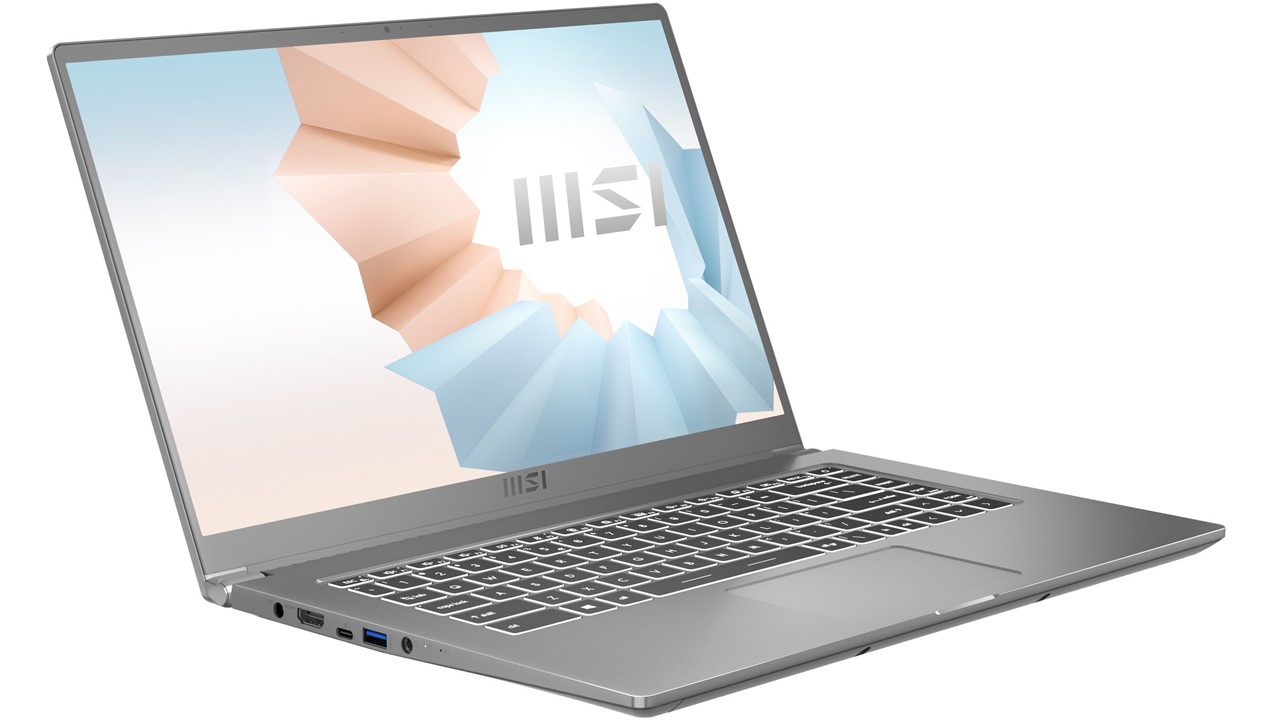
Bottom Line: This laptop comes with a very decent amount of specifications at a mid-range price tag. Astronomers can expect good processing speed from this device. It has useful and updated features.
Key Features:
- Screen: 15.6 inches
- Storage: 256GB SSD
- RAM: 8GB DDR4 SDRAM
- Processor: AMD Ryzen 5 5500U
- OS: Windows 10 Home
- GPU: AMD Radeon Graphics
Pros
- Affordable price
- It looks stylish and is a lightweight unit
- Backlit keyboard
Cons
- Battery life is poor
- The keyboard is not full-sized
- Storage capacity is too short
MSI Modern 15 laptop is a good option for astronomers and astrophotographers or anyone who is related to Astrophotography and who needs a lightweight and portable device.
It features an AMD Ryzen 5 5500U processor, 8GB DDR4 RAM, 256GB SSD, and an AMD Radeon graphics card.
These configurations make this PC capable enough to process astronomical data and any basic task related to astrophotography.
The 15.6 inches FHD display with 1920 x 1080 resolutions provides good color accuracy and brightness.
The laptop’s slim design and lightweight build make it easy to carry around at any place.
Overall, the MSI Modern 15 laptop offers a good balanced performance. It is a portable, affordable, and reliable device.
5. HP 14 Touchscreen – Value for Money

Bottom Line: Even though this laptop comes with a low SSD storage, the other useful features of it will add to the value for money when it is used for astronomy, by the astronomers or for astrophotography with its touchscreen, the combination of AMD Ryzen processor and AMD Radeon Vega 3 graphics.
Key Features
- Screen: 14 inches
- Storage: 128 GB M.2 SSD
- RAM: 8 GB DDR4 SDRAM
- Processor: AMD Ryzen 3 3200U
- OS: Windows 10
- GPU: AMD Radeon Vega 3
Pros
- The display is touchscreen allowing easy navigation.
- The system comes with a fingerprint reader to allow safer login.
- The media reader built in the system allows faster photo transfer.
Cons
- There is no discrete numeric keypad on the keyboard.
- There is no optical drive in the system.
- The amount of storage is low by today’s standards.
The two cores of the AMD Ryzen 3 processor that has a 4 MB cache and operate at a base clock speed of 2.60 GHz and up to 3.50 GHz has the ability of four-way processing that enhances the speed and performance of this laptop for astronomy, astronomers or astrophotography.
The AMD Radeon Vega 3 graphics card produces high quality images with good enough color reproduction on the 14-inch display that comes with 1366 x 768 pixels HD resolution. It is LED-backlit and therefore is highly energy efficient.
This touchscreen supports natural finger-touch to allow easy, fast, and comfortable navigation allowing you to make the most out of the Windows 10 operating system that comes with a 64-bit architecture.
The DDR4 memory of the system comes with 2400 MHz bandwidth to support multitasking.
The Solid-State Drive enhances the performance of the system allowing faster access and boot up.
The system also allows running several photo editing and video editing apps on it as well as using multiple browser tabs and programs all at once.
There are lots of ports and slots in the system design which you can use to add a number of external devices when you need.
HP 14 touchscreen comes with a headphone-out and microphone-in combo jack, one built-in media reader that allows simple and faster photo transfer, one HDMI 1.4B port that supports 4K output, one USB 3.1 Gen 1 Type C port, and two USB 3.1 Gen 1 Type A ports.
There is also a RJ45 LAN jack to provide more connectivity options apart from wireless connection in the form of Realtek RTL8821CE 802.11b/g/n/ac Wi-Fi networking and Bluetooth 4.2 support.
You can connect to a wireless-ac router and get a speed three times faster which will also provide wider coverage and more capacity than wireless-N.
The best thing is that it is backward-compatible with all other hotspots and Wi-Fi networks.
In addition to all these, the machine also comes with one built in fingerprint reader and one HD webcam with microphone integrated in it as well.
How to Choose Buy a Right Laptop for Astronomer?
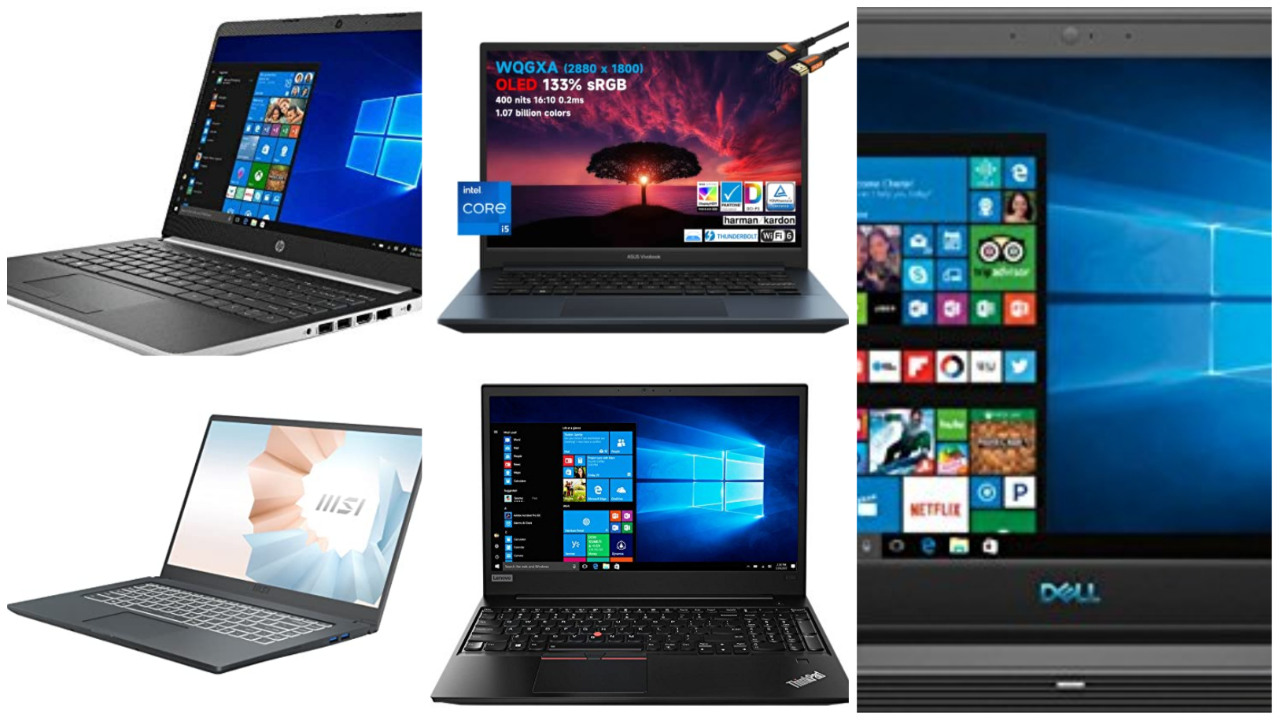
Your buying decision of a laptop for astronomy will largely depend on several factors such as your affordability, the type of job you are involved with, and your preferences.
The requirements for astronomy, astronomers or astrophotography will vary according to the preference.
For example, if you want a great gaming laptop for your job, the requirements will be different from a multimedia player device that will allow you to watch movies as well.
Therefore, you will have to focus on all the specs that will make your laptop most reliable.
It includes the design, the keyboard, storage, performance, comfort in use, the touchpad, the display quality, and battery life, apart from the cost.
Screen Size
Right from the size of the screen to the display resolution of the laptop for astronomy, astronomers or astrophotography, there are lots of things to consider.
The size of the screen will determine the portability of the laptop. Ideally, it should be within 13 to 15 inches.
If you work more on your desk than on the go, you can choose a screen larger than that, but then it will add to the weight of the system, which should never be more than 5 pounds to ensure that the system is portable and not cumbersome to carry along.
Though the size of the screen of the laptop matters a lot in astrophysics or astronomy, the convenience in use and portability should not be ignored at any cost.
This is because you will have to travel with your laptop to different places for your job and all these places may not be just by the side of a smooth highway!
The resolution of the screen is also an important factor to consider. Since you will be viewing celestial objects millions of miles away, the resolution of the screen should be very high.
This will not only make the images crisper and clearer, but will allow you to see every detail in it, and most of these are very minute.
Ideally, a UHD or UHD+ resolution is recommended, though a full HD screen will be fair enough, but nothing less than that.
An IPS panel and anti-glare property in the screen is also appreciated as that will allow you to see the images clearly outdoors under the sun as well as allow you to share your screen with others, if you are working in a group.
In this respect, a 2 in 1 laptop with a touchscreen will make your life much easier. You can use this as a tablet as well as detach, bend or rotate the screen to 360 degrees to share it with others.
You can work on the screen directly, adding to your convenience, as well.
Battery and Operating System
The life of the battery is not only important to allow you to work on it for long hours on a single charge but will also determine how portable it is.
Ideally, the battery life in your laptop for astronomy and astrophotography should be 8 hours, at least. This will allow you to take and use it anywhere you want, without having to worry too much about recharging the battery.
However, if you can afford and want to be better off, you may go for a battery life of 10 hours or more.
As for the operating system, Windows happens to be the more popular one. It is because this operating system is compatible with most of the devices and software that most of the astronomers use in their computer.
However, choose the version of Windows operating system according to the software you use mostly. This is because different types of astronomy software need different types of Windows operating systems.
For example, Windows XP operating systems will support Maxim DL, and Stellarium astronomy software will run on Windows 7, and others will need Windows Vista. As for the Mac systems, you will need a Mac OS X 10.8.5 or above.
Processor
As for the internal hardware specifications for a laptop for astronomy, the most critical aspects to consider include the processor, RAM, storage and others.
As for the CPU, or the central processing unit, which is the most crucial part of any laptop, you may use an Intel Core i5 processor.
This will put you and your laptop in a better position to view the celestial objects and work on it.
However, this does not mean you cannot go for an Intel Core i3 processor, but the benefits of it will be limited.
Nevertheless, it is always better to aim for a laptop with higher capabilities and qualities, especially for astronomy and astrophotography.
Therefore, a quad core Intel i7 processor with the serial number ending with HK or HQ will be far better for your job.
This will help you in multitasking smoothly and quickly without any system failure.
Moreover, the processor should come with a base clock frequency of at least 1 GHz to run any astronomy software of astronomy seamlessly.
However, if you want to have faster results, you should use a processor that comes with a base frequency of 1.5 GHz.
This will not be very difficult to find because most of the laptops today come with it.
RAM
The RAM of a laptop stores the data temporarily and therefore higher the amount of RAM, the better it will be for the overall performance of the laptop. It will also help in multitasking, a common feature in astronomy and astrophysics.
If you have a very low budget, then you may go for a laptop with 4GB, but, once again, it will be inadequate for high end jobs.
If you can afford and if you are into complex jobs, you should go for an 8GB of RAM in your laptop. This will make your life and work for astronomy much easier.
On the other hand, specific software used in astronomy and astrophysics may require even higher RAM. Therefore, choose wisely and accordingly.
Storage
The storage amount as well as its type will determine how efficiently your laptop can handle all the needs for astronomy or astrophotography.
Storage or disk space in an efficient laptop should be at least 256 GB, that too if your files are not too big. This is the storage amount that you will get today in most of the laptops.
However, for larger files you will need higher storage, but then it will add to the cost. When it comes to using the software for astronomy, these alone will take a lot of space to store, though not all of them will be very big.
For example, the Stellarium software will require only 250 MB of disk space, and, on the other hand, the Maxim DL software will need only 100 MB of disk space.
However, with the development in technology, modern software programs such as the Starry Night Pro Plus version will need as high as 12GB of disk space! The files will also need a larger space to store.
All these files and programs need to be accessed at a fast rate as well to ensure that your laptop works fast and seamlessly. It is therefore essential that you always go for an SSD instead of a conventional HDD.
The Solid-State Drives will be much faster and operate quietly without causing any heat buildup in the system.
It will not fail or damage easily because there will be no spinning discs inside it. This means that there will be no hanging up of the laptop at all.
Moreover, the SSDs are lighter and therefore will not affect the portability of the system, no matter how big a storage space it offers.
However, the cost of the SSDs will be more, and, greater the storage space it comes with, more will be the price.
Apart from the cost factor, you will not get these benefits if you go for an HDD type of storage in your laptop for astronomy or astrophotography. Once again, choose wisely.
Graphics Card
In a laptop for astronomy, astronomers or astrophotography, the graphics card is the key spec.
This is because you will deal with a lot of images, either capturing or studying them to find the inherent pattern.
Once again, all these will need using different types of software programs designed specifically for astronomy and astrophysics, and all these programs are graphics intensive.
An integrated Intel HD or UHD graphics chip may do the job, but will not be as effective as a dedicated graphics card in running these software programs.
Therefore, figure out the most suitable discrete GPU that is required for the specific software you want to use.
This will help you in creating and using a better 3D model to ensure greater perceptibility and more user-friendly presentation.
The functionality of the software as well as rendering will be much better with a better and dedicated graphics card with a minimum of 2 GB video memory.
Keyboard
Finally, focus on the keyboard of the laptop for astronomy, astronomers or astrophotography. It should be solid and full size with larger keys.
Having a separate 10-key number pad will be an added benefit because you will need to punch in a lot of numbers and make a lot of data entry.
Also, it should come with properly spaced keys with excellent travel and tactile feedback to provide you with the best typing experience.
Moreover, if the keyboard is backlit, it will be even better in helping you to see the keys clearly in a dark situation, a common scenario encountered by the astronomers, ensuring accuracy and comfort in typing.
All these features in the keyboard will help you to get your job done in the best way possible.

